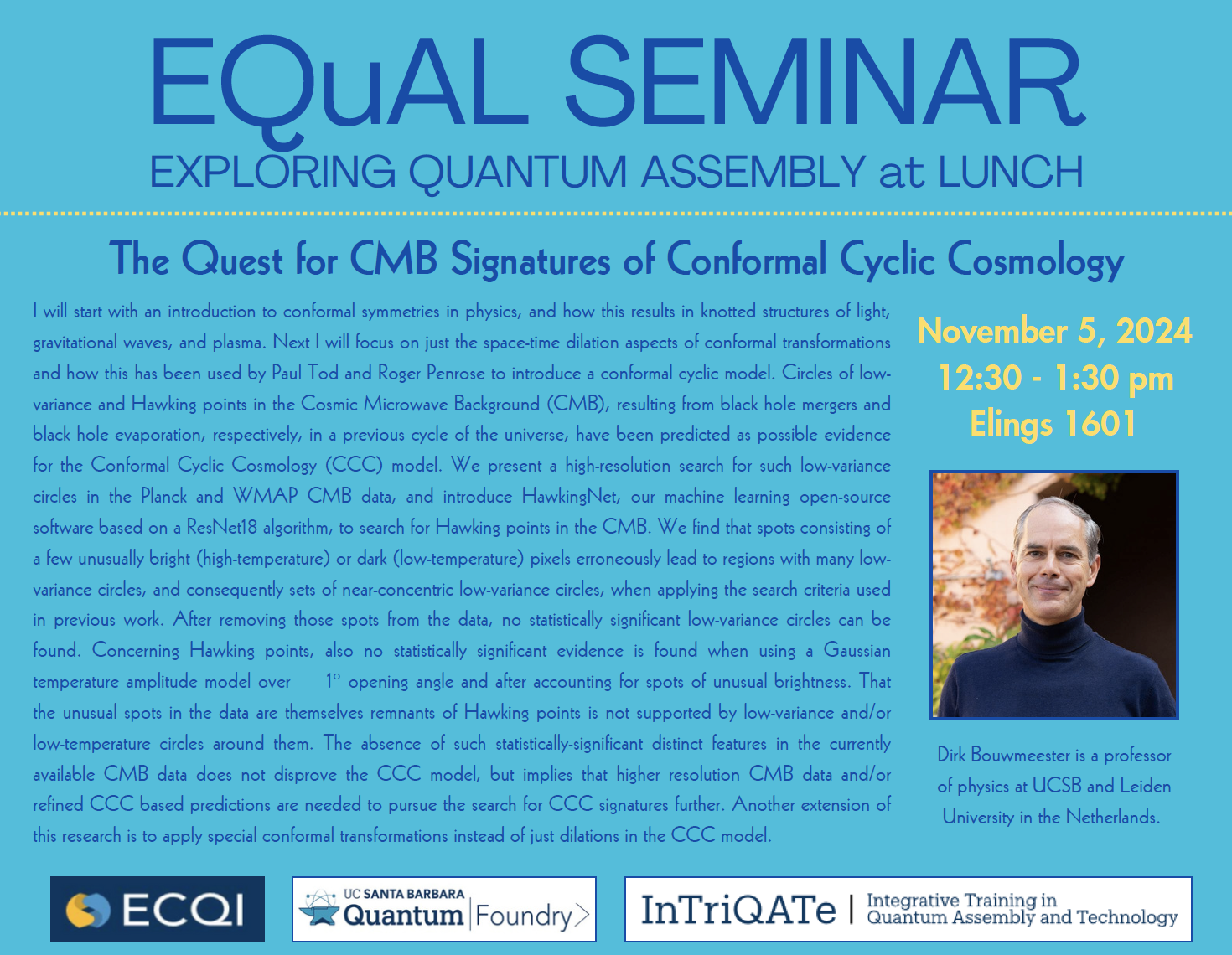EQuAL Seminar: Dirk Bouwmeester

The Quest for CMB Signatures of Conformal Cyclic Cosmology
I will start with an introduction to conformal symmetries in physics, and how this results in knotted structures of light, gravitational waves, and plasma. Next I will focus on just the space-time dilation aspects of conformal transformations and how this has been used by Paul Tod and Roger Penrose to introduce a conformal cyclic model. Circles of low-variance and Hawking points in the Cosmic Microwave Background (CMB), resulting from black hole mergers and black hole evaporation, respectively, in a previous cycle of the universe, have been predicted as possible evidence for the Conformal Cyclic Cosmology (CCC) model. We present a high-resolution search for such low-variance circles in the Planck and WMAP CMB data, and introduce HawkingNet, our machine learning open-source software based on a ResNet18 algorithm, to search for Hawking points in the CMB. We find that spots consisting of a few unusually bright (high-temperature) or dark (low-temperature) pixels erroneously lead to regions with many low-variance circles, and consequently sets of near-concentric low-variance circles, when applying the search criteria used in previous work. After removing those spots from the data, no statistically significant low-variance circles can be found. Concerning Hawking points, also no statistically significant evidence is found when using a Gaussian temperature amplitude model over ∼ 1° opening angle and after accounting for spots of unusual brightness. That the unusual spots in the data are themselves remnants of Hawking points is not supported by low-variance and/or low-temperature circles around them. The absence of such statistically-significant distinct features in the currently available CMB data does not disprove the CCC model, but implies that higher resolution CMB data and/or refined CCC based predictions are needed to pursue the search for CCC signatures further. Another extension of this research is to apply special conformal transformations instead of just dilations in the CCC model.